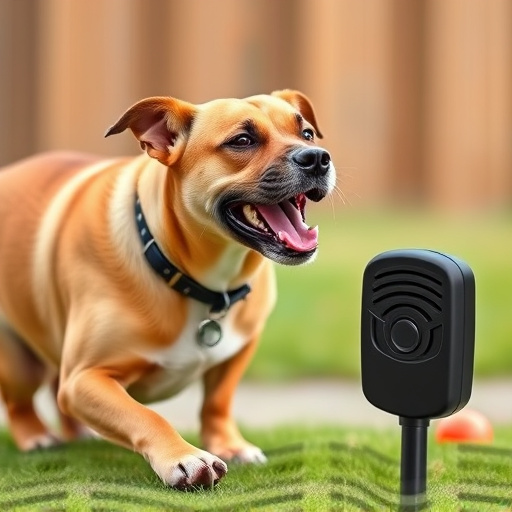“Discover an innovative solution for managing unwanted canine visitors with our in-depth look at electronic dog repellers, specifically focusing on handheld vs. wall-mounted ultrasonic models. These devices offer a humane and effective way to deter dogs without harm. We’ll explore how ultrasound waves work to repel dogs and delve into the advantages and disadvantages of each style. Additionally, we’ll highlight the surprising benefit of LED light integration, making these repellers more versatile than ever.”
- Understanding Electronic Dog Repellents: How They Work
- Handheld vs. Wall Mounted Ultrasonic Repellers: Pros and Cons
- LED Light Integration: Enhancing the Repelling Effectiveness
Understanding Electronic Dog Repellents: How They Work
Electronic dog repellents, such as handheld or wall-mounted ultrasonic devices, have become popular solutions for managing canine behavior in various settings. These innovative tools emit high-frequency sound waves that are typically beyond human hearing but can deter dogs from approaching. The technology leverages a principle known as auditory aversion training—by consistently pairing an area with these ultrasonic sounds, dogs learn to avoid the zone.
Unlike traditional repellents that rely on strong odors or sprays, electronic versions offer a humane and effective approach. Handheld devices are portable, allowing users to quickly move from one area to another, while wall-mounted units provide constant protection around specific zones like gardens or patios. This technology is particularly useful for those seeking alternatives to more aggressive training methods, offering a subtle yet powerful way to keep dogs at bay.
Handheld vs. Wall Mounted Ultrasonic Repellers: Pros and Cons
When it comes to keeping unwanted four-legged visitors away, there are two primary types of ultrasonic repellers: handheld and wall-mounted. Handheld devices offer portability, allowing users to carry them wherever needed, be it in a park or around their backyard. They’re convenient for those who want to move the device easily or use it in multiple locations. However, their effectiveness can vary depending on the size of the area and background noise levels.
On the other hand, wall-mounted repellers provide a more permanent solution. Strategically placed outdoors, they offer consistent protection against dogs without the need for frequent battery changes or relocations. These devices are ideal for homeowners seeking a reliable, long-term solution to keep their properties dog-free. Yet, their fixed nature means they may require professional installation and aren’t as flexible as handheld models.
LED Light Integration: Enhancing the Repelling Effectiveness
The integration of LED lights in electronic dog repellents takes the traditional ultrasonic repellent to a new level, offering a more versatile and effective solution for pet owners. Unlike handheld or wall-mounted ultrasonic repellents that rely solely on sound waves, the addition of LED lights provides a dual-pronged approach to deterring unwanted canine visitors.
These lights emit a specific wavelength of light that is known to be unpleasant for dogs, often causing them to avoid certain areas. This visual element complements the ultrasonic waves, expanding the repeller’s effective range and making it more suitable for both indoor and outdoor use. Moreover, LED lights are energy-efficient, long-lasting, and can be easily adjusted in brightness or color, providing pet owners with a dynamic tool to manage their territory effectively while ensuring the safety and well-being of their pets.
